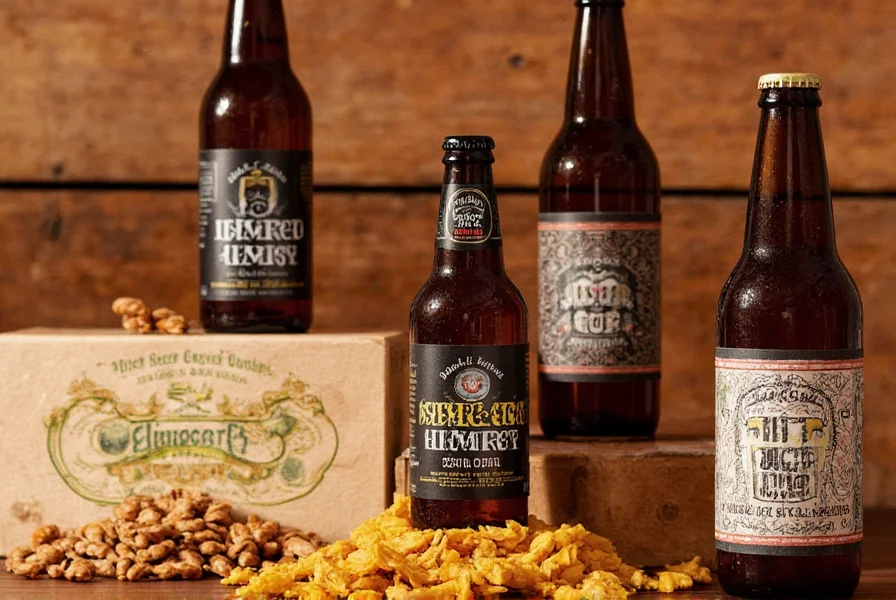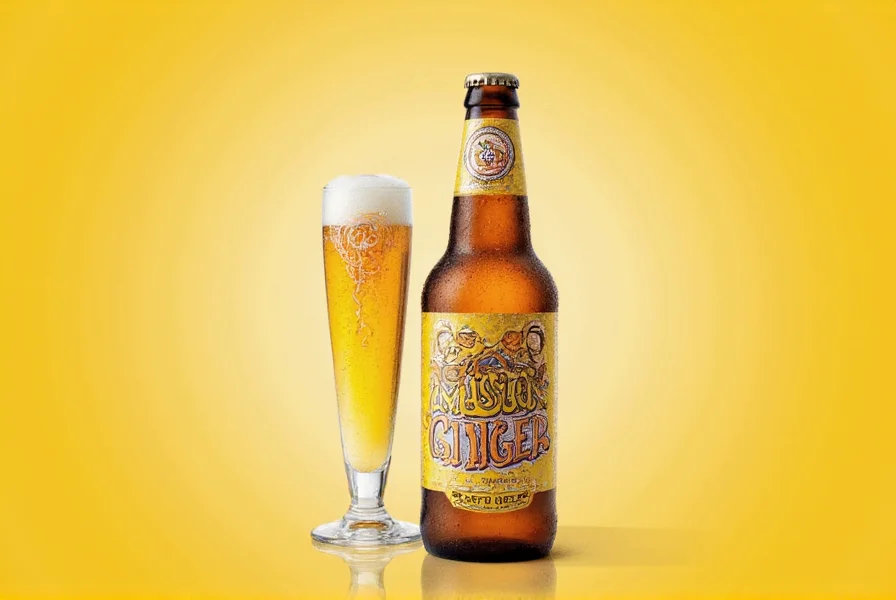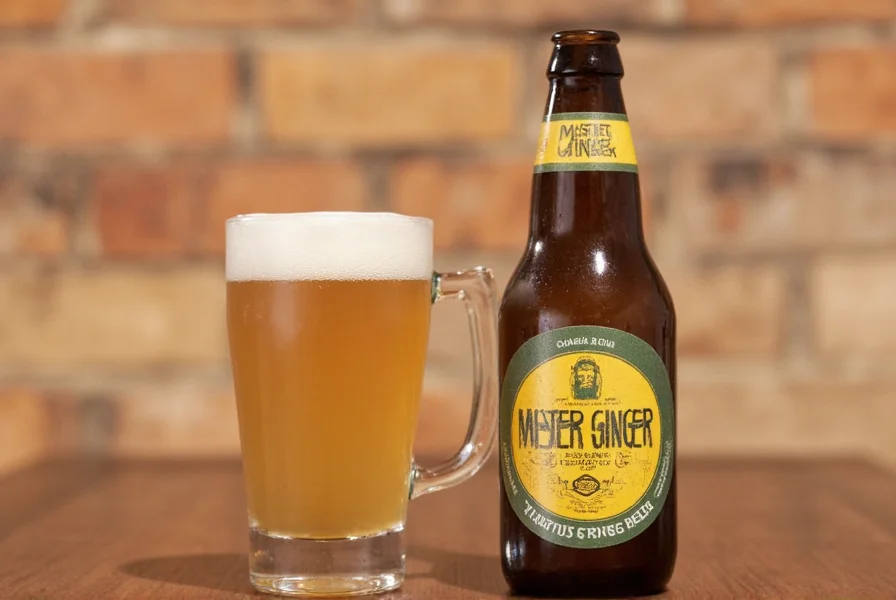For consumers seeking high-quality ginger beverages, Mister Ginger represents a notable option in the craft ginger beer market. This article explores the brand's background, production philosophy, and what distinguishes their products in an increasingly crowded beverage landscape.
History and Brand Development
Founded in the early 2010s, Mister Ginger emerged during the craft beverage renaissance when consumers began demanding alternatives to mass-produced soft drinks. The company's founders, beverage industry veterans with backgrounds in mixology and fermentation science, sought to create a ginger beer that honored traditional brewing methods while meeting contemporary taste preferences.
Unlike many commercial ginger beers that rely on artificial flavors and high-fructose corn syrup, Mister Ginger's approach focuses on small-batch production using fresh ginger root. This commitment to authenticity has helped the brand develop a loyal following among cocktail enthusiasts, health-conscious consumers, and those seeking non-alcoholic premium beverage options.

Production Process and Ingredients
The distinctive quality of Mister Ginger products stems from their meticulous production process. Each batch begins with carefully selected ginger root, which is peeled, grated, and combined with filtered water to create a ginger concentrate. This concentrate undergoes a natural fermentation process that develops complex flavor compounds while preserving the ginger's characteristic heat and aroma.
What sets Mister Ginger apart from many competitors is their refusal to use:
- Artificial flavors or colors
- High-fructose corn syrup
- Preservatives
- GMO ingredients
Instead, they rely on organic cane sugar for sweetness and natural fermentation to achieve the proper carbonation level. The result is a ginger beer with a more complex flavor profile and less cloying sweetness than many mainstream alternatives.
Product Range Analysis
Mister Ginger has expanded beyond their original flagship product to offer several variations that cater to different consumer preferences:
| Product Line | Key Characteristics | Best Used For |
|---|---|---|
| Classic Ginger Beer | Medium heat level, balanced sweetness, traditional ginger flavor | Cocktails, standalone refreshment |
| Extra Spicy Ginger Beer | Higher ginger concentration, pronounced heat, less sweetness | Moscow mules, digestive aid |
| Ginger Ale | Milder ginger flavor, lighter carbonation, subtle sweetness | Mixing with spirits, sensitive palates |
| Ginger Switchel | Vinegar component, electrolytes, functional beverage | Post-workout hydration, wellness routines |
Market Position and Consumer Appeal
In the growing craft ginger beer market, Mister Ginger occupies a premium niche. Their products typically retail at 20-30% higher than mainstream ginger beers but significantly below the price point of some ultra-premium craft options. This strategic positioning has helped them attract consumers who want better quality than mass-market options but aren't ready to invest in the highest-end craft beverages.
Market research indicates Mister Ginger's strongest consumer segments include:
- Cocktail enthusiasts seeking premium mixers
- Health-conscious consumers avoiding artificial ingredients
- Foodies exploring authentic flavor profiles
- Travelers seeking non-alcoholic premium beverage options

Quality Control and Sourcing Standards
Mister Ginger maintains rigorous quality control throughout their production process. They source ginger root from sustainable farms in Jamaica and Nigeria, known for producing ginger with optimal flavor compounds. Each batch undergoes multiple quality checks:
- Raw ingredient inspection
- Specific gravity testing during fermentation
- Flavor profile analysis by trained tasters
- Final product consistency verification
This attention to detail ensures consistent quality across batches, which is particularly challenging with natural ingredients like ginger that can vary in potency based on harvest conditions.
Consumer Reception and Industry Recognition
Since entering the market, Mister Ginger has received positive feedback for delivering on their promise of authentic ginger flavor. Independent taste tests consistently rank their products above mainstream ginger beers in blind tastings, particularly for complexity of flavor and absence of artificial aftertastes.
The brand has earned recognition through:
- Multiple awards at the Craft Beverage Awards
- Inclusion in premium hotel and restaurant beverage programs
- Favorable reviews in food and beverage publications
- Strong repeat purchase rates among initial customers
What's particularly notable is how Mister Ginger has built its reputation primarily through product quality rather than extensive marketing—a testament to the growing consumer preference for authentic, well-crafted products in the beverage space.
Considerations for Consumers
When selecting ginger beverages, consumers interested in Mister Ginger should consider several factors:
- Shelf life: Due to the natural ingredients and limited preservatives, Mister Ginger products typically have a shorter shelf life than conventional ginger beers
- Storage requirements: Refrigeration after opening is recommended to maintain optimal flavor
- Flavor evolution: The ginger heat may intensify slightly over time as natural fermentation continues
- Availability: While expanding, distribution remains more limited than major brands
For those exploring craft ginger beer options, Mister Ginger represents a solid choice for consumers prioritizing authentic flavor and natural ingredients over mass-market consistency.
Frequently Asked Questions
What makes Mister Ginger different from regular ginger beer?
Mister Ginger uses fresh ginger root rather than artificial flavors or ginger extract, undergoes natural fermentation for carbonation, and contains no high-fructose corn syrup or artificial preservatives. This results in a more complex flavor profile with authentic ginger heat and less cloying sweetness compared to many commercial ginger beers.
Is Mister Ginger alcoholic?
Mister Ginger products contain less than 0.5% alcohol by volume, which qualifies them as non-alcoholic beverages. This minimal alcohol content results from the natural fermentation process but is insufficient to produce any intoxicating effects.
Where can I purchase Mister Ginger products?
Mister Ginger is available through select grocery stores with craft beverage sections, specialty food stores, and online retailers. Availability varies by region, with strongest distribution in metropolitan areas. The company website provides a store locator for current retail partners.
How should Mister Ginger be stored for best quality?
Unopened bottles should be stored in a cool, dark place. Once opened, Mister Ginger products should be refrigerated and consumed within 7-10 days for optimal flavor and carbonation. The natural ingredients mean the product may continue to ferment slightly over time, affecting both flavor and carbonation levels.











 浙公网安备
33010002000092号
浙公网安备
33010002000092号 浙B2-20120091-4
浙B2-20120091-4